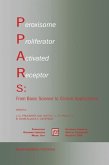This book makes a novel synthesis of the molecular aspects of the stress response and long term adaptation processes with the system biology approach of biological networks. Authored by an exciting mixture of top experts and young rising stars, it provides a comprehensive summary of the field and identifies future trends.
Dieser Download kann aus rechtlichen Gründen nur mit Rechnungsadresse in A, B, BG, CY, CZ, D, DK, EW, E, FIN, F, GR, HR, H, IRL, I, LT, L, LR, M, NL, PL, P, R, S, SLO, SK ausgeliefert werden.
Hinweis: Dieser Artikel kann nur an eine deutsche Lieferadresse ausgeliefert werden.









